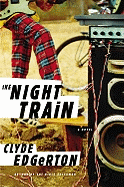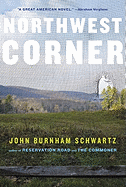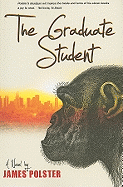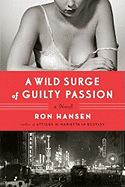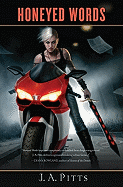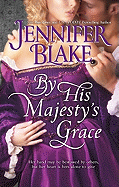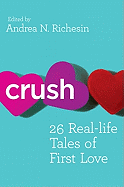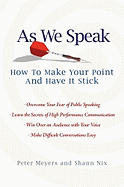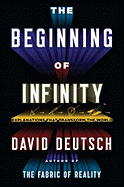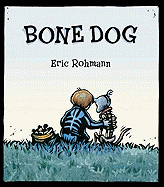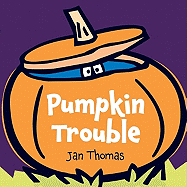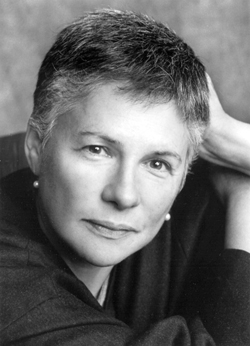 Katharine Weber is a novelist, and an acclaimed one at that. From her first book, Objects in the Mirror Are Closer than They Appear (just reissued by Broadway Books) to The Music Room, The Little Women, Triangle and True Confections, she has created an impressive body of fiction.
Katharine Weber is a novelist, and an acclaimed one at that. From her first book, Objects in the Mirror Are Closer than They Appear (just reissued by Broadway Books) to The Music Room, The Little Women, Triangle and True Confections, she has created an impressive body of fiction.
But now Weber has written a memoir, The Memory of All That: George Gershwin, Kay Swift, and My Family's Legacy of Infidelities (Crown, July 19, 2011). Many people (especially Gershwin devotees and biographers) already know that Weber's maternal grandmother, songwriter Katharine Swift Warburg, had a decade-long affair with the composer George Gershwin while she was married to Jimmy Warburg, scion of the banking dynasty that was very powerful in early- and mid-20th-century America.
However, there's more to the book than George and Kay's love (which ended only when Gershwin died from a brain tumor). What does "My Family's Legacy of Infidelities" mean?
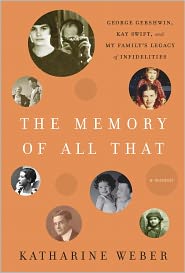 "You can only stuff so much into a subtitle," Weber responded. "We couldn't stuff in 'Warburg,' we couldn't stuff in 'FBI' for my father, and so on. But what I realized while writing the book, and only while I was writing it, is that Sidney Kaufman, this epic philanderer and schemer, wouldn't be my father if George Gershwin hadn't loomed over my mother's childhood. It's not something I grew up thinking or feeling. So, although this book is partly a researched biography, it's also in some sense memoir."
"You can only stuff so much into a subtitle," Weber responded. "We couldn't stuff in 'Warburg,' we couldn't stuff in 'FBI' for my father, and so on. But what I realized while writing the book, and only while I was writing it, is that Sidney Kaufman, this epic philanderer and schemer, wouldn't be my father if George Gershwin hadn't loomed over my mother's childhood. It's not something I grew up thinking or feeling. So, although this book is partly a researched biography, it's also in some sense memoir."
Weber is referring to her father's many extramarital affairs and shady business dealings (which included his having a huge FBI file that even noted Weber's birth)--as well as his faithlessness as a father. One of the most poignant scenes in the book is an early one in which young Katharine and her father head out to buy the family Christmas tree. Sidney is intent on getting the best deal possible, even if it means walking away from the tree seller, but he never tells his small daughter that he definitely plans to bring home a tree. The reader is immersed in a child's despair and confusion.
"One of the things I wanted to do was stay in the child's experience and not do that grownuppy, overvoicey thing that can rob moments like that of authenticity," Weber said. "But I'm so not a writer who captions things with 'This is what I'm telling you, here.' I don't do that; I don't write for everybody. "
Weber may not write for everybody, but one of the strengths of her new book is that she wants to write about everyone. "To me it's not just the pebble dropping in the stream that's interesting, it's the circles and circles and circles that get wider after it has dropped. I'm a novelist. I can't ever write about just one thing. How could I write about Kay Swift without writing about the Warburgs? How could I write about the Warburgs without writing about Kay's affair with George? If I wrote about that affair, I had to write about how it affected my family--and me."
When asked who was unfaithful to whom, Weber explained, "Well, there were infidelities in every sense. The FBI thought my father was unfaithful to his country. My grandfather was hideously unfaithful to his whole family. My grandmother was unfaithful to her daughters, but incredibly present with me--and faithful, until the day she died, to George Gershwin's memory."
One of the themes readers will find running through The Memory of All That is mirroring, including a remarkable moment of serendipity in which Weber, interviewing the acclaimed novelist Madeline L'Engle, realizes that a woman in a mirror in one of L'Engle's short stories is based on "Ganz," as Weber and her siblings called their grandmother Kay Swift. But the most haunting instance of mirroring is a photograph that George Gershwin took of himself with Andrea, Weber's mother, when Andrea was just 12 years old.
"The photo as Gershwin printed it is tightly cropped, but the full photo, which I have and which the Gershwin Trust doesn't own, shows you more of the room. When you see the full room, you can see that it's clearly night. Why is Gershwin in this room at night, taking a picture of a 12-year-old girl who looks so unhappy? She's not smiling. It's hard to know what's going on." Weber is not planning to deconstruct the photo, any more than she tries to trace the mirroring trope in her book.
"I thought, when I was younger, that I wanted to write about this charmed circle. Wouldn't you have? I mean, I remember at one party my parents held being under the piano, staring at Harold Arlen's shoes. Some of it was pretty great," Weber admitted. "But I didn't want to write about just the charmed bits, and really, there would never be enough information."
However, Weber the novelist realized, finally, that "anything I write is a lot more than information! I want to wear my research very lightly, and I want it to serve the story. I want any reader to feel that she is in sure hands. Just sit back and read--here's what comes next."
When what comes next is difficult or disturbing, Weber believes it should be included because it's necessary, but she never writes about anything just for prurience. "It's confounding to know that some early reviewers are using the word 'dysfunctional' about my family and my memories, because I never use that word. This book is not a complaint. For example, I do write about all sorts of infidelities, sexual and otherwise, but I never write about how dare he or how dare she. It's much more interesting when you go beyond that, and it's also much more emotionally authentic. It's kind of a default cliché to be outraged. "
"It's not a kitchen sink of a book," Weber continued. "There's always more, and I could have gone in any direction and found it. I wanted, finally, to be true to the story I needed to tell."
Portrait of the Artist: Katharine Weber
 What I am suggesting is that we be mindful about where we choose to distribute our dollars. One week's worth of venti skim lattes from a coffee shop equals a new trade paperback. I'll take the mug from the kitchen coffeepot, please; I'm saving up for my next book. --Bethanne Patrick
What I am suggesting is that we be mindful about where we choose to distribute our dollars. One week's worth of venti skim lattes from a coffee shop equals a new trade paperback. I'll take the mug from the kitchen coffeepot, please; I'm saving up for my next book. --Bethanne Patrick


 Katharine Weber is a novelist, and an acclaimed one at that. From her first book, Objects in the Mirror Are Closer than They Appear (just reissued by Broadway Books) to The Music Room, The Little Women, Triangle and True Confections, she has created an impressive body of fiction.
Katharine Weber is a novelist, and an acclaimed one at that. From her first book, Objects in the Mirror Are Closer than They Appear (just reissued by Broadway Books) to The Music Room, The Little Women, Triangle and True Confections, she has created an impressive body of fiction. "You can only stuff so much into a subtitle," Weber responded. "We couldn't stuff in 'Warburg,' we couldn't stuff in 'FBI' for my father, and so on. But what I realized while writing the book, and only while I was writing it, is that Sidney Kaufman, this epic philanderer and schemer, wouldn't be my father if George Gershwin hadn't loomed over my mother's childhood. It's not something I grew up thinking or feeling. So, although this book is partly a researched biography, it's also in some sense memoir."
"You can only stuff so much into a subtitle," Weber responded. "We couldn't stuff in 'Warburg,' we couldn't stuff in 'FBI' for my father, and so on. But what I realized while writing the book, and only while I was writing it, is that Sidney Kaufman, this epic philanderer and schemer, wouldn't be my father if George Gershwin hadn't loomed over my mother's childhood. It's not something I grew up thinking or feeling. So, although this book is partly a researched biography, it's also in some sense memoir." You can read our review of Rules of Civility by Amor Towles below; editor Bethanne Patrick liked it a lot, but the reason it's here in Further Reading is not just because it's an excellent novel, but also a singular one. Rules of Civility is a novel of manners that avoids being mannered, and when you finish reading, you might want more of...
You can read our review of Rules of Civility by Amor Towles below; editor Bethanne Patrick liked it a lot, but the reason it's here in Further Reading is not just because it's an excellent novel, but also a singular one. Rules of Civility is a novel of manners that avoids being mannered, and when you finish reading, you might want more of...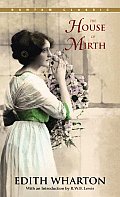 Glamorous Manhattan: It takes place in a completely different century, but The House of Mirth by Edith Wharton, with its conflicted heroine Lily Bart, shows what Katy Kontent from Rules of Civility might have faced if born at another time. What's clear and sad in reading both novels is that men and women too often set their own traps in trying to escape those they feel others have set for them.
Glamorous Manhattan: It takes place in a completely different century, but The House of Mirth by Edith Wharton, with its conflicted heroine Lily Bart, shows what Katy Kontent from Rules of Civility might have faced if born at another time. What's clear and sad in reading both novels is that men and women too often set their own traps in trying to escape those they feel others have set for them.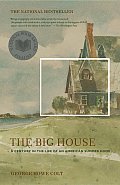 High-WASP relationships: The narrative sprawls like the 11-bedroom Cape Cod structure at the center of The Big House: A Century in the Life of An American Summer Home by George Howe Colt. This is an entirely good thing, as Colt--who spent 42 summers at his family's old-money escape on Cape Cod's Wings Neck--uses history, geography, nostalgia and much more to examine the beauty and blight of legacy.
High-WASP relationships: The narrative sprawls like the 11-bedroom Cape Cod structure at the center of The Big House: A Century in the Life of An American Summer Home by George Howe Colt. This is an entirely good thing, as Colt--who spent 42 summers at his family's old-money escape on Cape Cod's Wings Neck--uses history, geography, nostalgia and much more to examine the beauty and blight of legacy.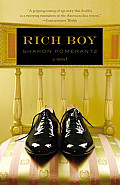 Child of Immigrants Makes Good: It's the mid-1960s when Robert Vishniak, the protagonist of Rich Boy by Sharon Pomerantz, escapes his Jewish, working-class Philadelphia roots and uses his native intelligence and good looks to get from Tufts University to marrying a rich woman, but otherwise, his journey has a great deal in common with Katy Kontent's--but quite a different ending.
Child of Immigrants Makes Good: It's the mid-1960s when Robert Vishniak, the protagonist of Rich Boy by Sharon Pomerantz, escapes his Jewish, working-class Philadelphia roots and uses his native intelligence and good looks to get from Tufts University to marrying a rich woman, but otherwise, his journey has a great deal in common with Katy Kontent's--but quite a different ending. Authors have particular reason to mourn the loss of the Borders chain: since February, there are now 642 fewer opportunities for events and signings. "Borders was incredibly good to me when I published The Magician's Assistant in 1997," reminisces novelist Ann Patchett
Authors have particular reason to mourn the loss of the Borders chain: since February, there are now 642 fewer opportunities for events and signings. "Borders was incredibly good to me when I published The Magician's Assistant in 1997," reminisces novelist Ann Patchett  Of course, authors are also readers, and the piece has some lovely thoughts from them about the magic of entering a clean, well-lighted bookstore. From Lauren Groff (Delicate Edible Birds): "When I first came to a blockbuster bookstore--bright, cool, caffeinated, filled with endless quantities of books that smelled clean and had no silverfish running out of them--it seemed not unlike my idea of heaven. The truth is I love bookstores, any bookstores. I'm terribly sad when an indie goes out of business, but I've never fully understood the rage against big chain bookstores, because I've found that, more likely than not, they're staffed by smart, passionate, well-read book lovers. It breaks my heart that these people will now be out of jobs."
Of course, authors are also readers, and the piece has some lovely thoughts from them about the magic of entering a clean, well-lighted bookstore. From Lauren Groff (Delicate Edible Birds): "When I first came to a blockbuster bookstore--bright, cool, caffeinated, filled with endless quantities of books that smelled clean and had no silverfish running out of them--it seemed not unlike my idea of heaven. The truth is I love bookstores, any bookstores. I'm terribly sad when an indie goes out of business, but I've never fully understood the rage against big chain bookstores, because I've found that, more likely than not, they're staffed by smart, passionate, well-read book lovers. It breaks my heart that these people will now be out of jobs."  Your favorite summer read might come along when you're 11--or it might be something you picked up less than a year ago, as demonstrated by this
Your favorite summer read might come along when you're 11--or it might be something you picked up less than a year ago, as demonstrated by this 